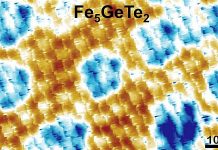
Harnessing energy from plasma requires a precise understanding of its behavior during fusion to keep it hot, dense, and stable.
A new theoretical model about a plasma’s edge, which can become unstable and bulge, brings the prospect of commercial fusion power closer to reality.
“The model refines the thinking on stabilizing the edge of the plasma for different tokamak shapes,” said Jason Parisi, a staff research physicist at PPPL.
Parisi is the lead author of three articles describing the model that were published in the journals Nuclear Fusion and Physics of Plasma.
The primary paper focuses on a part of the plasma called the pedestal, which is located at the edge. The pedestal is prone to instabilities because the plasma’s temperature and pressure often drop sharply across this area.
The new model is noteworthy because it is the first to match pedestal behaviors that were seen in the U.S. Department of Energy’s (DOE) Princeton Plasma Physics Laboratory (PPPL) National Spherical Torus Experiment (NSTX).
While conventional tokamaks are shaped like donuts, NSTX is one of several tokamaks that are shaped more like a cored apple. The difference in tokamak proportions impacts plasma and, as the model indicates, the pedestal.
Parisi, together with a team of scientists, explored the limits of pedestals and investigated how much pressure could be applied to plasma inside a fusion reactor before instabilities appeared.
In particular, they studied disruptions in the pedestal called ballooning instabilities: bulges of plasma that jut out, like the end of a long balloon when squeezed.
“The model is an extension of a model that people have used in the field for maybe 10 years, but we made the ballooning stability calculation a lot more sophisticated,” Parisi said.
To develop their model, the scientists looked at the relationship between pedestal measurements—height and width—and ballooning instabilities. Parisi said the new model fit on the first try.
“I was surprised by how well it works. We tried to break the model to ensure it was accurate, but it fits the data really well,” he said.
The existing model, known as EPED, was known to work for donut-shaped tokamaks but not for the spherical variety. “We decided to give it a go, and just by changing one part of EPED, now it works really well,” Parisi said.
The results also give researchers a clearer picture of the contrast between the two tokamak designs.
“There is certainly a big difference between the stability boundary for the apple shape and the standard-shaped tokamak, and our model can now somewhat explain why that difference exists,” he said. The findings could help minimize plasma disruptions.
Tokamaks are designed to intensify the pressure and temperature of plasma, but instabilities can thwart those efforts. If plasma bulges out and touches the walls of the reactor, for example, it can erode the walls over time.
Instabilities can also radiate energy away from the plasma. Knowing how steep a pedestal can be before instabilities occur could help researchers find ways to optimize plasmas for fusion reactions based on the proportions of the tokamak.
While he added that it’s not yet clear which shape is more advantageous, the model suggests other experiments that would try to exploit the positive aspects of the apple shape and see how much benefit they could provide.
Fundamentally, the new model enhances our understanding of pedestals and brings scientists closer to achieving the greater goal of designing a fusion reactor that generates more power than it consumes.



